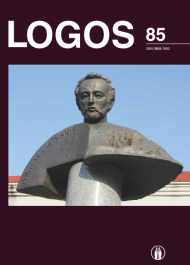Kai Kurie Estetiniai Aikščių Formavimo Aspektai Ir Jų Identifikacijos Lietuvos Miestų Aikštėse
Some Aesthetic Aspects of the Formation of Squares and their Identification in the Town Squares of Lithuania
Author(s): Gintautas TiškusSubject(s): Cultural history, Architecture, Aesthetics, Rural and urban sociology
Published by: Visuomeninė organizacija »LOGOS«
Keywords: square; aesthetics; artistic expression; historical change; ideological aspect;
Summary/Abstract: The article provides an overview of the concepts related to a work of art and environment aesthetics, theoretical and esthetic aspects of formation of squares and defines the concept of a square. The first attribute of the square is a boundary which distinguishes a square from other spaces. Yet, boundaries do not only separate one location or space from the other, but also lay down certain rules of conduct suited to this area or location. Crossing the threshold is a certain event, when the established dimension, quality or state is transferred into a different one, so the other space identification attribute, which distinguishes the area from the rest and which establishes the rules of conduct is the mission of the space (its function). These two key attributes of a square – boundaries and the mission - determine the third attribute of the square, which is the architectural and aesthetic expression of the square. Beautiful or aesthetic is not only the object that we realize or feel, but also the object that makes us feel emotional satisfaction and we are delighted to see it. This means that the the process of designing this object requires know-how – awareness of the rules that help to create beautiful and aesthetic objects. The squares of Lithuanian historic towns were formed in accordance with the principles of proportionality. According to their primary function squares can be divided into a Market Square, and a Town Hall Square. A study of present-day town squares shows that there are almost no monofunctional squares. The squares where the focus is put on ideological accents (monuments, memorials), the artistic expression signals ideological colors can lay a certain “load“ which will interfere with the multifunctional use of the square.
Journal: LOGOS - A Journal of Religion, Philosophy, Comparative Cultural Studies and Art
- Issue Year: 2015
- Issue No: 85
- Page Range: 181-187
- Page Count: 7
- Language: Lithuanian

